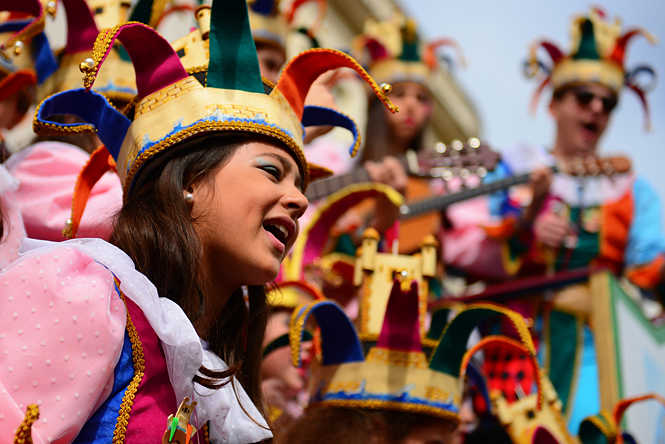
The origins of the Carnival of Cadiz
The origins of the Carnival
The origins of the Carnival of Cadiz are curious.
They go back to the 16th century, when Cadiz was one of the most important ports in the Spanish empire, and received influences from the whole world. Venice was a city with which it had many trading links, and some traditions were copied from there.
They evolved and now the Carnival celebrations of Cadiz are among those with the strongest individual personality of all.
Pre-Carnival
The gastronomic fiestas organised by the carnival clubs are a great place to enjoy yourself and get into the spirit of the fiesta.
Taking advantage of the final rehearsals of the various groups involved in the competition, in recent years a number of clubs have begun to organise street activities, giving the public a first chance to get to know the clubs.
To attract more people and ensure a party atmosphere, the clubs began to offer a wide variety of delicious food: oysters, sea urchins, fried pastries, thick soups, fried food, tortillas, cabbage, etc. In this way, you could move from fiesta to fiesta, and take in the essence of the cuisine of Cadiz.
Three of these fiestas became consolidated and are now considered traditional:
- The Pestiñada (fried pastry party) organised by the Los Dedócratas club the Saturday before the Falla Competition begins. Around 12,000 sweet fried pastries will be handed out together with the traditional accompaniment of a glass of anisette.
- The Erizada (sea urchin party) organised by the El Erizo club the day after the Pestiñada. The Erizada is the dean of the Cadiz Carnival gastronomic fiestas. Around 400 kg of sea urchins are distributed
- The Ostionada (oyster party), organised by the El Molino club on the same day as the Erizada. It hands out a total of 1,500 kg of oysters free.
These three fiestas have ensured that the week before the competition begins has taken on its own festive atmosphere, with fried pastries, sea urchins and oysters acting as an excuse for listening to the first traditional songs of the year.




